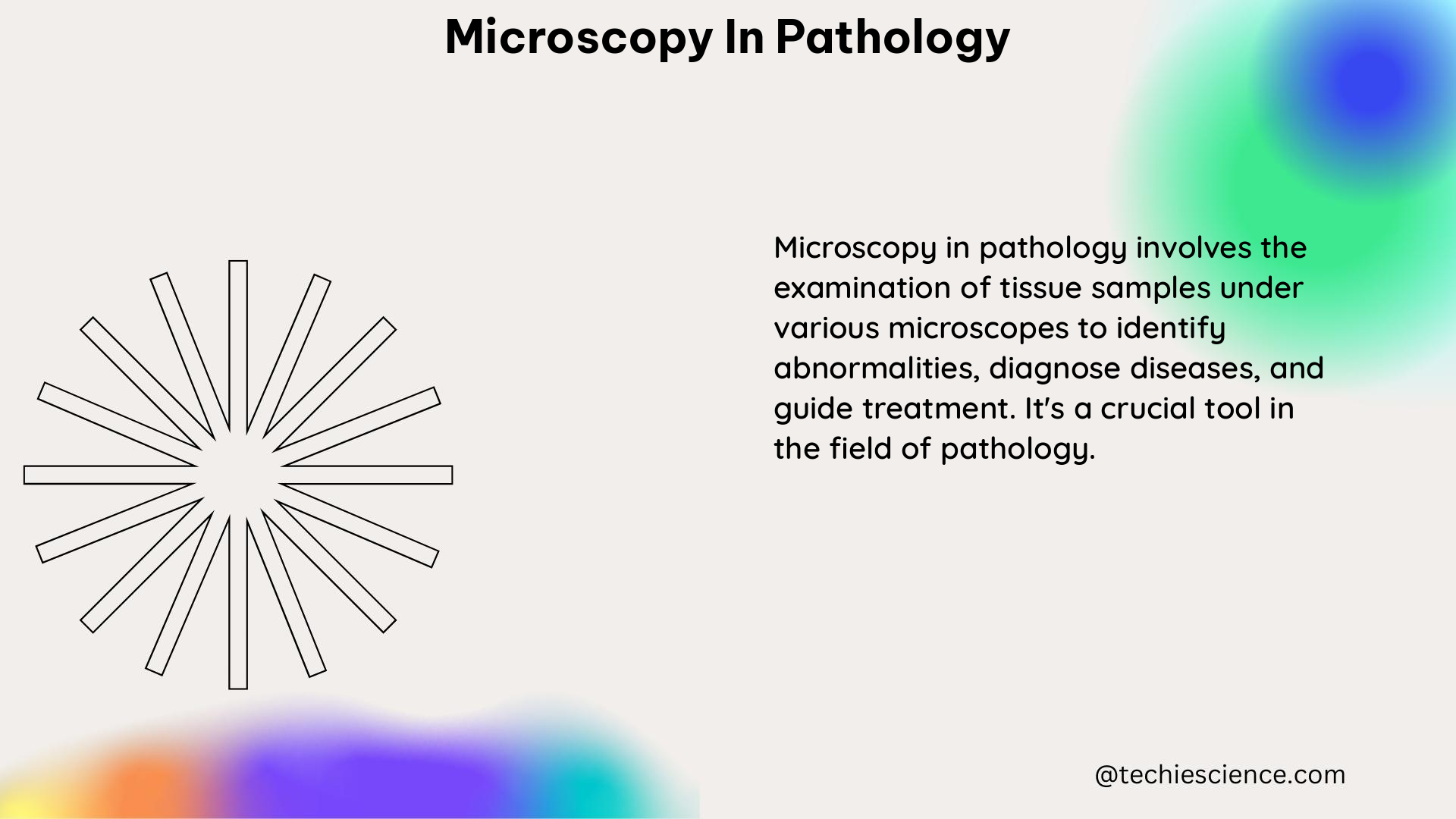Microscopy in pathology is a crucial tool for examining tissues and cells to diagnose diseases, monitor treatment response, and conduct research. This process involves capturing and analyzing digital images of stained tissue samples to extract quantitative data, enabling pathologists to provide more detailed, objective, and reproducible assessments of tissue biomarkers.
Understanding the Physics of Microscopy
The physics of microscopy involves the interaction of light with matter. The resolution of a microscope is determined by the wavelength of light and the numerical aperture of the objective lens, as described by the formula:
Resolution = λ / (2 * NA)
where λ is the wavelength of light and NA is the numerical aperture of the objective lens.
Physics Examples
The wavelength of light is a crucial factor in microscopy. Shorter wavelengths, such as those in the ultraviolet or blue-violet range, provide higher resolution compared to longer wavelengths in the visible spectrum. The numerical aperture of the objective lens also plays a significant role, with higher numerical apertures resulting in higher resolution.
Physics Numerical Problems
-
Problem: What is the resolution of a microscope with a wavelength of 500 nm and a numerical aperture of 1.4?
Solution: Resolution = λ / (2 * NA) = 500 nm / (2 * 1.4) = 178.6 nm -
Problem: What is the wavelength of light required to achieve a resolution of 100 nm with a numerical aperture of 1.3?
Solution: Resolution = λ / (2 * NA) => λ = Resolution * (2 * NA) = 100 nm * (2 * 1.3) = 260 nm
Quantitative Image Analysis in Pathology

Quantitative image analysis is an essential tool in pathology, enabling pathologists to extract three main types of information from microscopy data:
- Intensity: Refers to the brightness or color of pixels in an image, which can be used to measure protein expression in immunohistochemistry (IHC) stains.
- Morphology: Refers to the shape and size of objects in an image, which can be used to identify and count individual cells of interest or collect information about their spatial arrangement.
- Object Counts or Categorical Labels: Refers to the number or type of objects in an image, which can be used to calculate the area of structures like tumor regions or fat vacuoles.
Image analysis algorithms must be flexible and iterative to accommodate the diverse array of questions they aim to answer, as well as account for different types of tissue stains and variations in tissue quality, staining quality, and image quality.
Ensuring High-Quality Images and Data
To obtain the highest-quality images and data, it is essential to follow these best practices:
- File Formats: Use lossless file formats for image acquisition and storage, such as TIFF or PNG, to preserve image quality.
- Exposure Time: Use appropriate exposure times to avoid saturation and lack of dynamic range.
- Staining Techniques: For brightfield/histology images, use fluorescence markers instead of absorbance-based stains to quantify the amount of stain present.
Figures, Data Points, and Measurements
- The wavelength of light determines the resolution of a microscope, with shorter wavelengths providing higher resolution.
- The numerical aperture of the objective lens also affects the resolution, with higher numerical apertures providing higher resolution.
- Lossless file formats, such as TIFF or PNG, should be used for image acquisition and storage to ensure the highest-quality images and data.
- Proper exposure time and avoidance of saturation and lack of dynamic range are essential for image acquisition.
- Fluorescence markers should be used instead of absorbance-based stains for brightfield/histology images to quantify the amount of stain present.
References
- Quantitative Image Analysis for Tissue Biomarker Use: A White Paper From the Digital Pathology Association. Haydee Lara, Zaibo Li, Esther Abels, Famke Aeffner, Marilyn M. Bui, Ehab A. ElGabry, Cleopatra Kozlowski, Michael C. Montalto, Anil V. Parwani, Mark D. Zarella, Douglas Bowman, David Rimm, Liron Pantanowitz.
- Made to measure: An introduction to quantifying microscopy data in the life sciences. Culley Siân Caballero, Alicia Cuber, Burden Jemima J Uhlmann, Virginie.
- Image Analysis: Enabling Data Powered Pathology – Reveal Bio. Jeremy Warner, Scientific Marketing Associate, Reveal Biosciences.
- Quantifying microscopy images: top 10 tips for image acquisition. Anne Carpenter.

The lambdageeks.com Core SME Team is a group of experienced subject matter experts from diverse scientific and technical fields including Physics, Chemistry, Technology,Electronics & Electrical Engineering, Automotive, Mechanical Engineering. Our team collaborates to create high-quality, well-researched articles on a wide range of science and technology topics for the lambdageeks.com website.
All Our Senior SME are having more than 7 Years of experience in the respective fields . They are either Working Industry Professionals or assocaited With different Universities. Refer Our Authors Page to get to know About our Core SMEs.